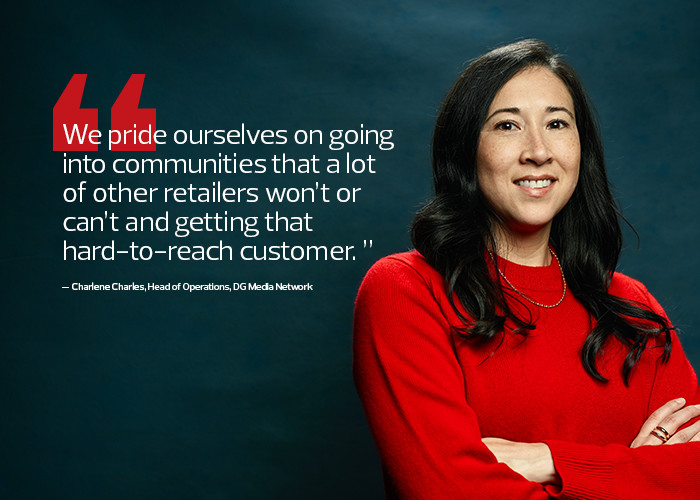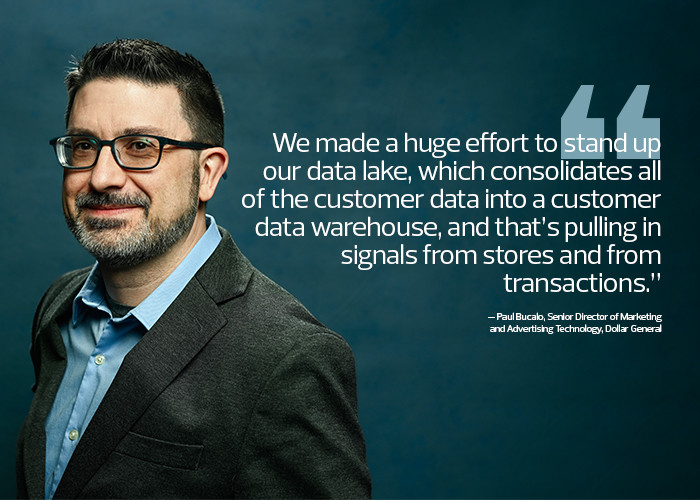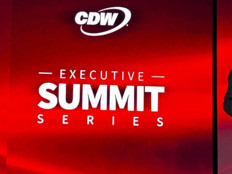Dollar General is known for its ubiquitous physical footprint, especially in rural America, and for delivering value to its customers. It’s less known for creating modern digital experiences for them.
That’s changing. Charlene Charles, head of operations for the company’s DG Media Network, and Paul Bucalo, its senior director of digital and marketing technology, are striving to leverage data analytics and a targeted messaging strategy to deliver a more seamless experience to customers who are seeking value from the chain that calls itself “America’s general store.”
Charles and Bucalo spoke with BizTech Managing Editor Bob Keaveney about the progress of their efforts — and what comes next.
Click the banner to learn about the comprehensive IT solutions modernizing the retail experience.
BIZTECH: Who is the typical Dollar General customer?
Charles: When you think of our typical customer, think rural America. Eighty percent of the communities that we serve have 20,000 people or fewer. They are tight-knit communities. In terms of what they look like, most often they’re families.
We have over 19,000 locations, and people are looking for us to save them time and money. Those store locations equate to convenience, and we’re helping people find low prices on brand-name items.
We pride ourselves on going into communities that a lot of other retailers won’t or can’t and getting that hard-to-reach customer. Collectively, they have a lot of buying power.
BIZTECH: How digitally savvy are your customers?
Charles: I’ve been using the term “myth-busters” a lot. We have information indicating that our customers who digitally engage with us are twice as productive as the average customer; they’re much more engaged with us in the stores. Our shoppers do a lot online before they go into a store. They pre-shop, they make lists and check prices, they look at our digital coupons and cash-back offers. They’re looking at it as, “How do I get everything in order before I go to my local DG?” They’re very digitally engaged, and we see it over and over: They engage with us online and then go to the store to buy.
EXPLORE: Emerging technology can help address supply chain issues.
BIZTECH: This cohort of consumers engages digitally with your brand differently than with other retailers. What’s your digital strategy?
Charles: For us, when you say “cohort,” that suggests that everyone is either analog or online, and we see it as more of a spectrum. So, we’re keeping that omnichannel approach: We’re diversifying our touchpoints to ensure that we’re talking to everyone, wherever they are in their journey, whether that’s email, connected TV, Meta or our website, and we still do print in some areas.
BIZTECH:You’ve spoken about the importance of providing a consistent experience for customers online and in store. How does that play out at Dollar General?
Bucalo: Imagine a customer who looks at the weekly circular. That could be on our site, on a smartphone or in print. When customers go into the store, if they have our app installed, we push a notification to their phones letting them know they have some offers they can “clip” right then and there and save money. They fill their baskets, go to the point of sale and redeem those offers. That marries up the digital and the analog.
BIZTECH: Can you talk about what you’re doing with data acquisition and analysis to get the most intimate portrait possible of each customer?
Charles: When we talk about an integrated view of our customer, we mean in the realm of vendor-amplified, owned and paid. We don’t want to duplicate our engagement and marketing efforts. We don’t want to waste investment.
Also, we want to suppress properly: If we have a larger initiative going on, we don’t need to target the exact same group of customers to try to convert them to a single item. We emphasize that because a lot of retailers’ media networks are siloed. We work together to get an integrated view of the customer.
BIZTECH: How has this translated into technology deployments?
Bucalo: We made a huge effort to stand up our data lake, which consolidates all of the customer data into a customer data warehouse, and that’s pulling in signals from stores and from transactions. We’re able to take those signals and cascade them into a clean zone where you can start to draw conclusions from that data, whether that’s through machine learning models or more traditional types of data analysis. And that’s what we call zone one or the more traditional “IT zone” of data, where it takes technical skills to get in there. That’s where our decision science team would work.
And then, most recently, we’ve started standing up self-service capabilities for the business. That’s the customer data platform, where our employees and partners can start to discover their own audiences based on the attributes that they’re looking for. The customer data warehouse then connects to the digital experiences, whether it’s the content management system, where you have a library of offers, or it’s connecting to Adobe Target, which has personalization capabilities as well as experimentation capabilities. You can start to see what works and what doesn’t from a customer experience perspective.
BIZTECH: Where is Dollar General on its digital journey? What’s next?
Charles: I can see a place where we’re able to engage with brands and have journeys across the board, and it’s an always-on, evergreen approach, instead of, “Here’s an audience, here’s a campaign and here are the results.” That’s getting the answers faster. More A/B testing and experimentation will be the key to unlocking these business problems.
Bucalo: We want to advance to multivariate experimentation: Once we can get that running efficiently and scaled, the next step would be crafting the customer experience. You don’t have to wait and evaluate the results; it does it in real time, based on what the algorithms are learning about the customer. That way, you can go beyond offers that are standard for everyone and get to offers that are customized for specific audiences, based on what you know about their past behavior.












